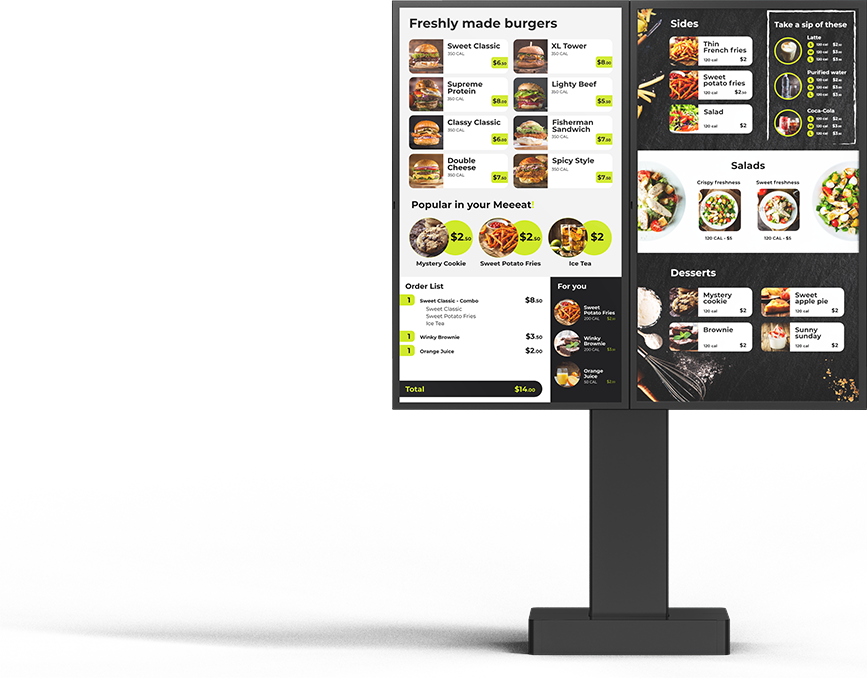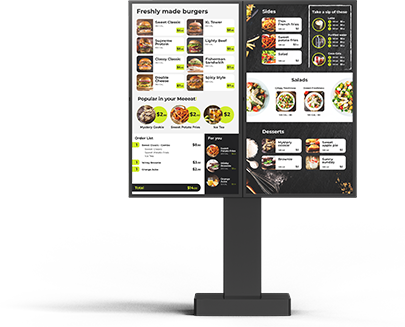Intuitive platform to support your marketing strategy
Our cloud-based platform enables you to connect location-specific marketing with national campaigns in real time that will deepen customer engagement, build brand loyalty, and most importantly, increase sales. And, as your strategic marketing partner, we are there to guide you through every step, whether you are managing from the corporate office or through your local managers.


Revolutionize your restaurant with razor sharp communication
Drive your in-store customer journey with a unique and personalized experience by showing customers where to order and what is available resulting in higher sales, and greater customer retention.


Fast-track your drive-thru engagement
Unlock unlimited ordering potential with our vibrant, AI-enabled digital screens that deliver personalized content that’s specific to your customers.
Explore ODMB
Over 20,000 drive-thru installations worldwide

with the Acrelec Drive-Thru experts